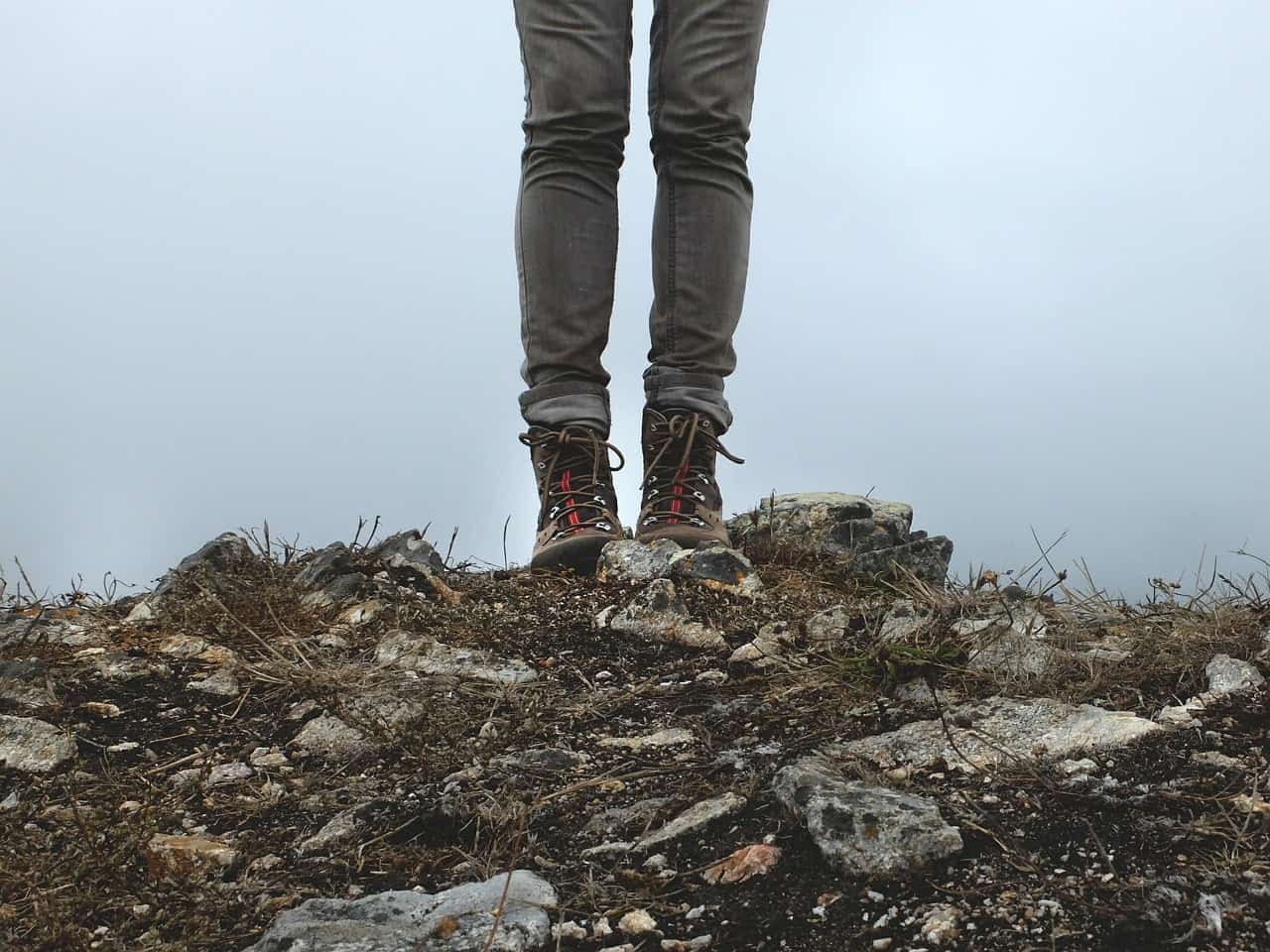Women’s Hiking Boots
Finding the right pair of hiking boots can be tricky enough under any circumstances. But when you’re seeking that elusive perfect fit while working with a tight budget, it becomes even more complicated.
This guide will help to point you in the direction of the best hiking boots for women.
Quick Look
- Timberland Women’s White Ledge Mid Ankle Boot
- Manfen Women’s Lightweight Waterproof Hunting Boots With Ankle Support And High-Traction Grip
- XPETI Women’s Dimo Mid Waterproof Hiking Outdoor Boot
- Clorts Women’s Waterproof Suede Leather Lightweight Hiking Shoes—Outdoor Backpacking Trekking Trail
- XPETI Women’s Thermator Mid High-Top Waterproof Hiking Outdoor Boot
- KEEN Women’s Terradora Hiking Shoe
- Hi-Tec Women’s Skamania Mid-Rise Waterproof Hiking Boot
- Columbia Women’s Newton Ridge Plus Waterproof Amped Wide Boot With Ankle Support And High-Traction
- KEEN Women’s Voyageur Mid Hiking Boot
- Clorts Women’s Hiking Waterproof Lightweight Boots
In A Hurry?
Our Top Pick – Timberland Women’s White Ledge Mid Ankle Boot
Buying Hiking Boots For Women: What You Need To Know
When you’ve finished reading this section, you should have a clear idea of what you’re looking for in a hiking boot. We’ll also provide a general overview of how to break in your boots for first use, as well as any potential pitfalls that should be avoided.
How To Select The Perfect Hiking Boot
Before you begin your search, ask yourself the following questions:
- What type of hiking am I planning on doing?
- How often will I wear these hiking boots?
- Will the boots be worn for any activities besides hiking (i.e., during work hours)?
Once you get a feel for your own basic needs, it will be easier to work your way through the specifications and features that each boot has to offer.
For example, there is a range of boot types available, from light trail shoes that resemble sneakers, to heavy-duty clodhoppers meant for tough mountaineering expeditions.
Also, if you have wide feet, consider in looking at boots that come in wide sizes.
It’s essential to choose the right boot for your lifestyle—otherwise, they may end up gathering dust in your closet.
A Glossary Of Hiking Boot Terms
Whether shopping for men’s boots or women’s boots, you will come across terms that will need to be understood. So, let’s go ahead and look into what these terms are and what they mean.
Arch—The portion of the sole located around the middle of your boot, where your foot forms a natural upward curve, some individuals may need a boot with high arches .
Backpacking Boots—These boots are designed for multiday trips over rough terrain. They can handle heavy loads and long mileage, but it’s best to steer clear of them if you’re only planning on short day hikes.
Crampons—The soles of some heavy-duty hiking boots will be outfitted with spiked metal plates. These are called “crampons,” and are usually only necessary for navigating icy or snowy terrain.
Day Hikers—The most common form of hiking boot, these offer solid protection from pebbles and other debris but are flexible enough to be worn comfortably on a daily basis. They usually don’t require much breaking in, but a good fit is essential.
EVA—“EVA” stands for “ethylene vinyl acetate,” a material commonly found in the midsoles of certain hiking boots. It’s a light, springy, inexpensive fabric that provides moderate support without adding too much bulk and weight to the design.
Full-grain Leather—This firm, durable material is used in the construction of many high-quality backpacking boots. Since it’s highly resistant to both water and abrasives, it offers excellent protection on multiday hikes.
The downside? Boots made from full-grain leather are often quite expensive and require a long breaking-in period before they can be worn comfortably on the trail.
Forefoot—The part of the sole located beneath the toe box of your hiking boot.
Heel Brake—This portion of the sole forms a box shape around the heel, making it easier for the boot to gain traction on descents.
Hiking Shoes—A lightweight, low-cut boot with a flexible tread, designed for easy walks on well-groomed trails.
Lugs—These are the thick, rubber bumps found on the boot’s tread. The sturdier the lugs are, the stronger their grip will be. Also, look for lugs that are spaced a good distance apart—this aids with traction as well as mud removal.
Membrane—In most cases, if a boot is advertised as “waterproof,” that means it features a membrane fashioned of Gore-Tex or a similar synthetic material. While these will help keep your feet dry, they’ll also make the bootless breathable.
Plate—These are inserted between the midsole and the outsole of the boot to provide protection from potential hazards, such as gnarled roots and sharp rocks.
Polyurethane—A sturdier alternative to EVA, this protective cushioning is often found in the midsoles of durable backpacking boots.
Shaft—This measurement refers to the part of the boot that rises above your foot, extending up your calf. Therefore, a mid-cut boot will have a shorter shaft than a high-cut model.
Shank—Shanks are used in providing additional support in boots that are designed to stand up to heavy loads. They can be found between the midsole and outsole of the shoe.
Split-grain Leather—Usually paired with nylon or another synthetic, this type of leather refers to the smooth, flexible outer layer of cowhide. It’s not as durable as full-grain leather, but it’s often less expensive.
Synthetic—Materials that are machine-made, rather than natural. Nylon and polyester are two examples that are commonly used in the manufacture of hiking boots.
Synthetics are lightweight, quick to dry, and require almost no breaking in. On the other hand, they usually don’t last as long as their leather counterparts.

Warning Signs
If you’re shopping for hiking boots in person, always try them on in the store first. Take a short walk around to see how they fit. While some stiffness is to be expected, especially with leather boots, there shouldn’t be any tight pinching or rubbing.
Swap them out for a different pair if you encounter any initial discomfort. Similarly, if you’ve purchased the boots online or by mail order, return them if you find that the fit is uncomfortable right out of the box.
The exterior of the shoe should be tightly constructed, with no split seams or sloppy glue patches. Put your hand inside the boot, palm down, to check for bubbles or ripples on the insole.
Also, take a good look at the eyelets for the shoelaces. If they’re made of plastic or cheap-looking metal, they probably aren’t built to last.
Breaking In Your New Boots
It takes time to break in a good set of hiking boots, but the reward will be worth the effort. Start by wearing them around the house for a day or two, pairing them with the same socks you normally wear while hiking.
Make sure the tongue is straight and the laces are tight during this initial period.
Next, enlist in a few brief walks outside, slowly upping the distance if the fit continues to feel comfortable.
As you increase your mileage, consider adding a backpack loaded with day gear to allow the boots to adapt to the extra weight. Likewise, when you finally take to the trail, start with shorter hikes to make sure that your new gear is up to the challenge.
Best Hiking Boots For Women For Under $100: Product Review Guide
Now that you know what features to be on the lookout for, it’s time to take a look at some of the best hiking boots for women on the current market. All the models listed carry price tags of $100 or less.
1. Timberland Women’s White Ledge Mid Ankle Boot
This durable mid-cut boot is constructed of 100 percent leather, with a rubber sole that features broad, sturdy lugs for traction. It’s also fully waterproof, with a shaft that measures 4.5 inches from the arch.
2. Manfen Women’s Lightweight Waterproof Hunting Boots With Ankle Support And High-Traction Grip
The lug pattern on this high-cut boot is widely spaced, making for ideal traction and easy cleanup after muddy trail hikes. The coverage offers sufficient protection from snow and slush, as well as debris, and they’re fully insulated against frigid temperatures.
These boots come equipped with EVA midsoles and snowshoe straps, in addition to being fully waterproof.
3. XPETI Women’s Dimo Mid Waterproof Hiking Outdoor Boot
The Dimo model runs on the high side for a mid-cut boot, with an extra-thick rubber sole that boasts long, narrow lugs for stability. Constructed of synthetic fabric with an EVA-cushioned midsole, this is a lightweight boot with firm ankle support and a firm grip.
4. Clorts Women’s Waterproof Suede Leather Lightweight Hiking Shoes—Outdoor Backpacking Trekking Trail
These fully waterproof boots are constructed of a suede/synthetic blend, with a single-tongue design to help keep out debris. The padded collar and EVA midsole offer superb comfort without adding too much bulk.
5. XPETI Women’s Thermator Mid High-Top Waterproof Hiking Outdoor Boot
This is another high-cut offering from XPETI, with the shaft measuring a whopping eight inches from the arch.
The rubber sole is topped with a synthetic waterproof mesh blend, complete with a moisture-wicking mesh lining and strong ankle support. Like the Dimo model, the Thermator offers a snowshoe loop for added versatility.
6. KEEN Women’s Terradora Hiking Shoe
The textile/synthetic blend of this mid-cut offering from KEEN is sturdy but lightweight, with a shaft that measures 4.5 inches from the arch.
The EVA midsole can be removed to make the shoe more breathable, and the rubber soles are designed not to mark up the floor.
7. Hi-Tec Women’s Skamania Mid-Rise Waterproof Hiking Boot
Like the KEEN Terradora boot, this suede-and-mesh offering features a removable EVA footbed, with additional cushioning in the midsole.
The shaft measures five inches from the arch, but the rubber sole is constructed to give the shoe a 1.5-inch heel, which is generous for a mid-cut boot.
The breathable material makes the boot comfortable enough for summer weather, with a fully waterproof membrane for rainy days.
8. Columbia Women’s Newton Ridge Plus Waterproof Amped Wide Boot With Ankle Support And High-Traction Grip
This Columbia boot is one of the highest-quality products on our list, with a sturdy leather/suede/mesh construct that’s fully waterproof and suitable for three-season wear.
The seam-sealed design offers superb protection, while the lightweight cushioned midsole provides comfort across unpredictable terrain.
9. KEEN Women’s Voyageur Mid Hiking Boot
The roomy toe box on this leather mid-cut hiking boot is one of its greatest perks, particularly once it’s been fully broken in. While KEEN advertises the Voyageur as being constructed of 100 percent leather, there are mesh accents included for breathability.
The shaft measures 4.5 inches from the arch, and the ample heel on the rubber sole measures a full two inches.
10. Clorts Women’s Hiking Waterproof Lightweight Boots
Clorts uses a blend of 60 percent leather to 40 percent mesh for these mid-cut boots, making them durable enough to last while avoiding the dreaded “clammy foot” syndrome that can occur when a boot lacks breathability.
The boots are fully waterproof and suitable for both daily walks and longer day hikes, although they aren’t quite sturdy enough to take on rough terrain.
The Verdict
Of all the products listed here, which one would we choose? It’s a tough decision, as there are redeeming factors to each and every one of them. However, we would recommend you to the Timberland model.
These boots are built to last, with a comfortable, stable fit and excellent traction. Even the weak points can be easily sidestepped by purchasing a slightly larger size and remembering to give the boots a generous breaking-in period.
We hope this guide has given you the information you need to make sure your next hiking boots are the best you’ve ever owned.
Best of luck, and happy trails!











